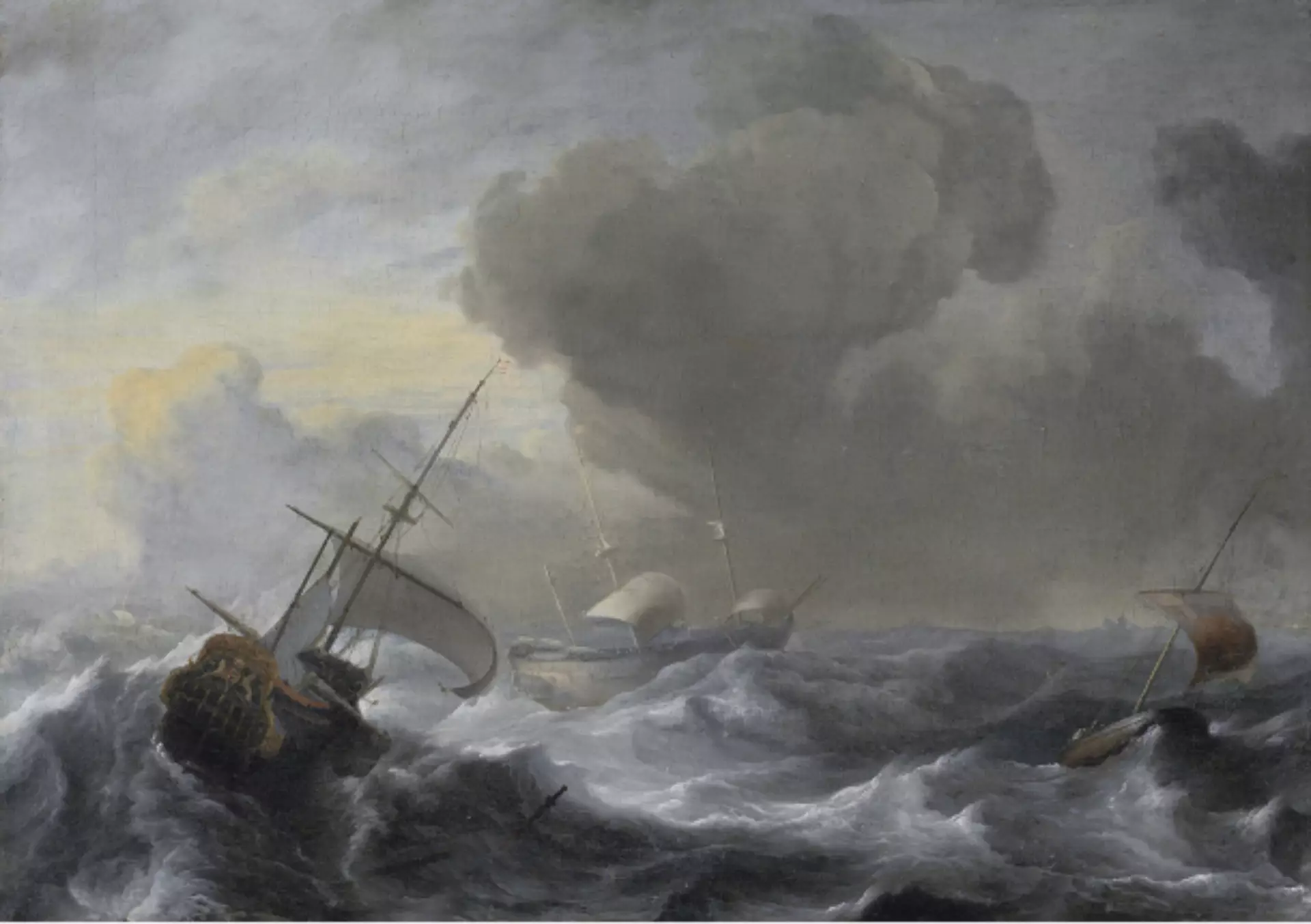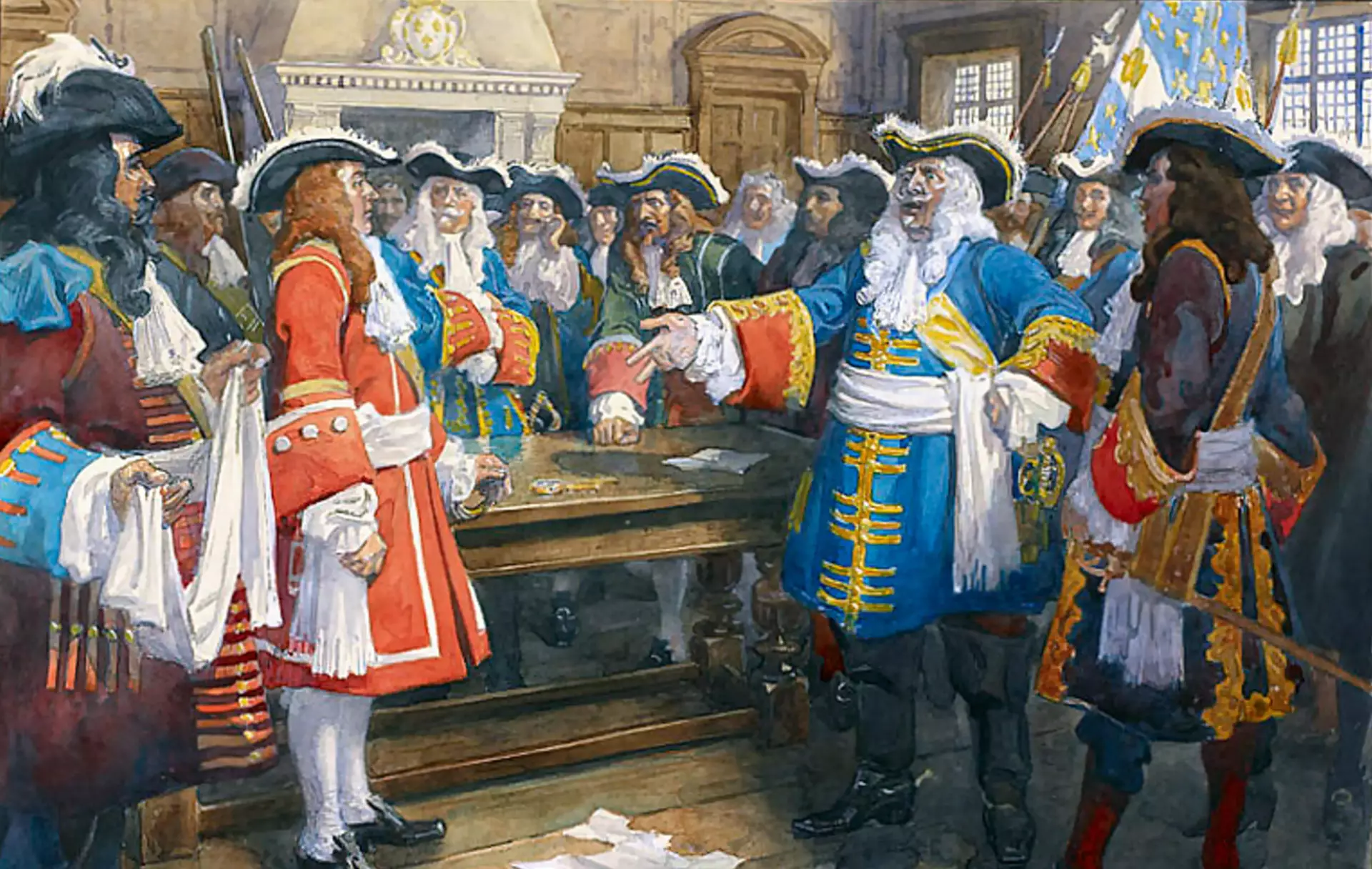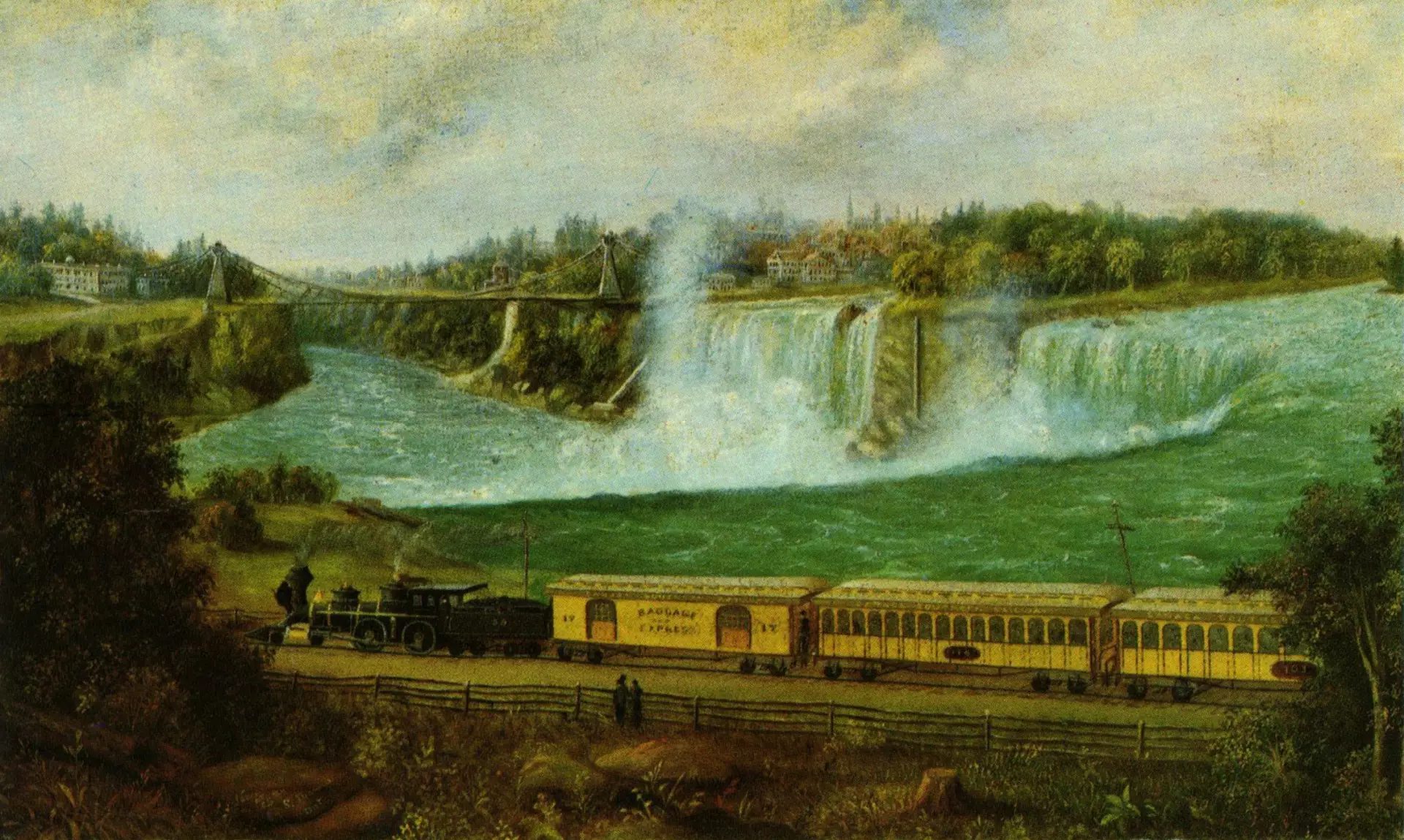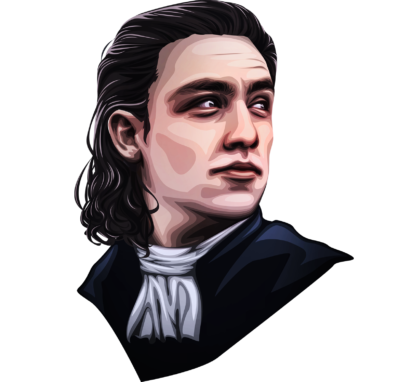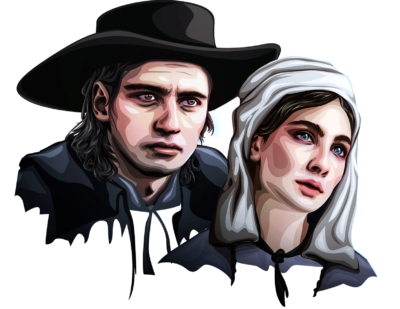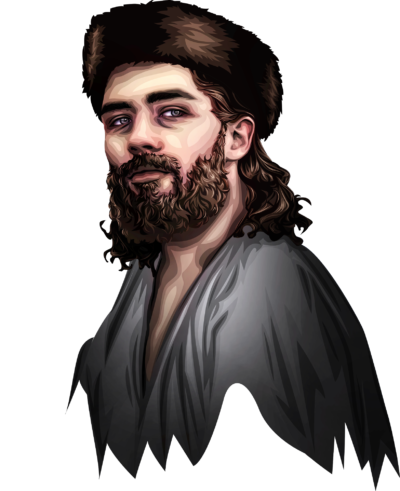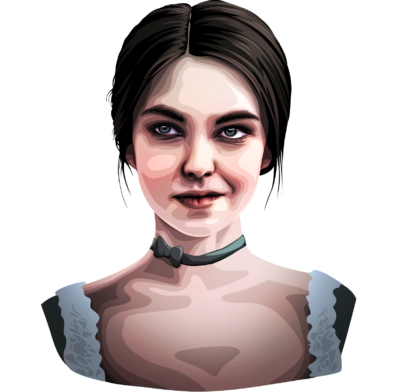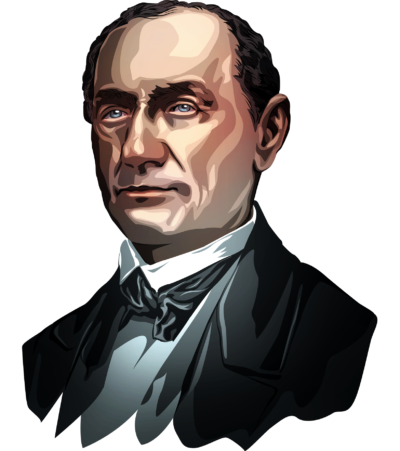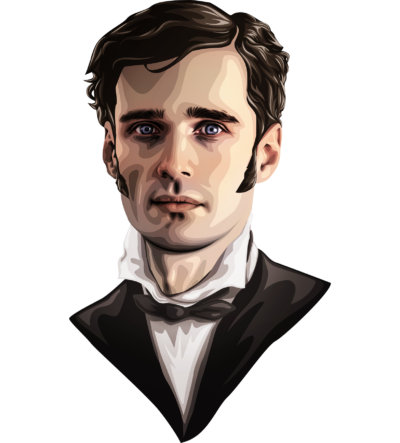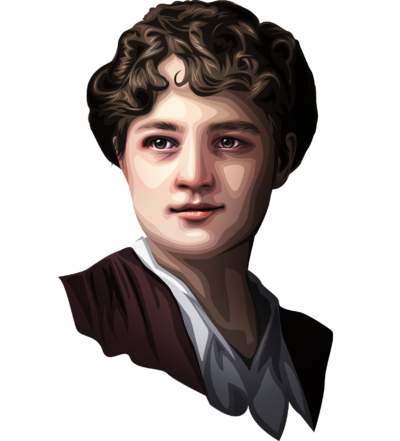THE BUSINESSWOMAN
Marie-Catherine Trottier
The one who called the shots


Among Antoine Trottier Desruisseaux’s children, his daughter Marie-Catherine really stands out. Like her father, she had a true nose for business and remarkable leadership skills. There’s a good reason she was nicknamed the mother of America’s Beaubiens!
FEMALE FUR TRADER

Canadienne, Canadien. ca. 1750-1780.
Marie-Catherine Trottier was born in 1679 in Batiscan and soon became involved in her father’s businesses. In 1696, at the age of 17, she married Jean Cuillerier dit Léveillé, a coureur de bois and son of a prominent fur merchant from the Montreal area.

Fur trading post. n.d.

Cuillerier's Fort, Lachine. Henry Richard S. Bunnett, 1885.
Soon after she got married, Marie-Catherine started her business as a fur trader, which she expanded while raising seven children.
SHOWING HER TRUE COLOURS
Jean Cuillerier dit Léveillé died in 1710 while helping to build the Lachine Fort. Marie-Catherine was left alone in charge of the growing clan.
As the new owner, she protected and increased the assets and fur trade routes controlled by her late husband.

Fort Remy, 1671, According to the Plan Made by M. de Catalogne. Gédéon de Catalogne, 1889.
A BLENDED FAMILY
In New France, a widow who owned property did not remain unmarried for long. Marie-Catherine’s first marriage had been arranged by her father, and it is likely her second marriage also met the Trottier clan’s expectations.
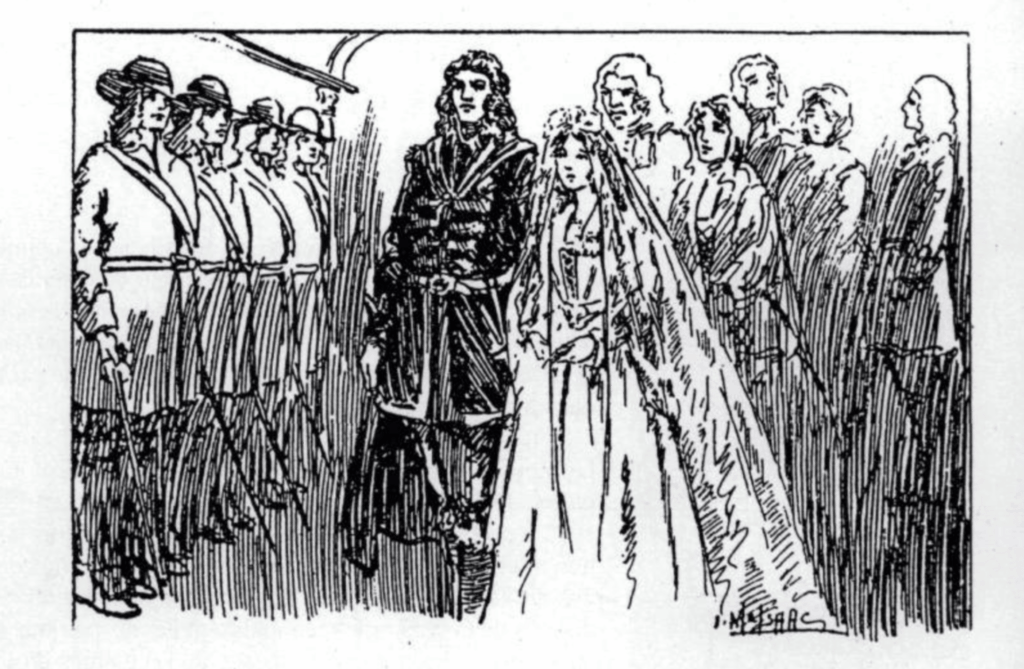
No title. James McIsaac, n.d.

A Wedding Under the French Regime. James McIsaac, 1930.
On May 27, 1714, Marie-Catherine pledged to marry François-Marie Picoté de Belestre, a 37-year-old naval officer. Originally from Paris, the Picoté de Belestre family belonged to the French nobility. They were educated, astute businessmen who were renowned for their military skill.
They also enjoyed significant support in France, Quebec City and Ville-Marie, where they had been settled since 1659. A childless widower, François-Marie agreed to support Marie-Catherine’s five children until they reached the age of majority. They would have two more children together.

Sources of life. Rolland Boulanger, 1944.
THE BOSS
Marie-Catherine negotiated freely in her own name and on her husband’s behalf. The couple borrowed and loaned money, and acquired several plots of land around Montreal.

Jean Talon Visiting Settlers. Lawrence R. Batchelor, ca. 1931.
THE MOTHER OF THE BEAUBIENS IN AMERICA
François-Marie Picoté de Belestre died in 1729. Widowed for a second time, Marie-Catherine kept her spirits up.
The Trottiers strengthened their base in the Great Lakes area and supplied furs to the store of Julien Trottier Desrivières, Marie-Catherine’s brother and the “bourgeois merchant of Montreal.”

General Map of the Parishes and Colonies Established on Both Sides of the St. Lawrence River from Rimouski up to Côteau des Cèdres. Collection d’Anville, ca. 1740-1749.
Marie-Catherine Trottier died on February 24, 1731. A true entrepreneur, she successfully built up the family business founded by her father, Antoine Trottier.
Three of her children would follow in her footsteps, making their mark in the fur trade: Marie-Anne, Antoine and Jean-Baptiste.

The Old Church of Lachine, 1701-1703. Désiré Girouard, 1893.

Following the death of her husband, Marie-Catherine Trottier proved that we show our true colours when faced with adversity. This young widow was one of North America’s first businesswomen.
